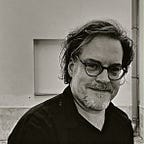Dancing with the Stars
Book Review: DIAGHILEV: A LIFE by SJENG SCHEIJEN (Oxford University Press)
By Bradley Bambarger <2011>
Debussy — referring to Sergei Diaghilev, prime mover of the Ballets Russes and the catalyst for some of the 20th century’s greatest music, including the French composer’s Jeux — called him “that terrible and charming man, who could make stones dance.”
Diaghilev recognized his gifts and his flaws, early on. Seeking to soothe his family as he aimed to transition from failed composer to impresario, the young Diaghilev wrote this justification: “First of all, I’m a great charlatan, although one with flair; second, I’m a great charmer; third, I have great nerve; fourth, I’m a man with a great deal of logic and few principles; and fifth, I think I lack talent; but, if you like, I think I’ve found my true calling — patron of the arts. Everything has been given to me but money — but that will come.” The money would indeed come — and go and come and go, as he created and held together the Ballets Russes from the scratch of his Dionysian force of will, forward-minded taste and constant-crisis management (“the psychology of the hectic,” he called it). His company was one of Europe’s leading-edge cultural spectacles from 1909 to 1929.
Sjeng Scheijen’s Diaghilev: A Life is an instant classic. The way the book tells the tale — through astounding research and writing of verve — it feels less like biography and more like drama, from Diaghilev’s childhood in a cultured, comfortable Russian world that would soon vanish to those hectic days of riotous Parisian premieres and interpersonal scandal to his demise in 1929 at age 57 from complications of diabetes in Venice, his refuge. Early Ballets Russes productions brought Russian opera to the West for the first time, and the ballets featured not only pioneering dancers and choreographers — including Massine, Fokine, Balanchine and Vaslav Nijinsky, whose affair with the older Diaghilev would end badly for both — but also influential visual artists, led by Léon Bakst. The 1917 ballet Parade featured music by Satie, a scenario by Cocteau and sets by Picasso. The productions were “total theater,” inspired by Diaghilev’s early love of Wagner.
Diaghilev shepherded into the world Ravel’s Daphnis et Chloé; Falla’s El Sombrero de Tres Picos; Strauss’s Joseph’s Legend; Prokofiev’s Chout, Le Pas d’acier and The Prodigal Son; and Poulenc’s Les biches. Then there are the ever-iconic collaborations with Stravinsky: The Firebird, Petrushka, The Rite of Spring, Les noces. After experiencing The Firebird, Debussy said: “You hear completely new rhythmic combinations! French dancers would never have agreed to dance to such music. . . Ergo, Diaghilev is a great man.” The primal nature of the offerings on hand at the 1913 premiere of The Rite of Spring caused audience riots that are still famous, but Diaghilev recognized good publicity (“exactly what I wanted,” he told Stravinsky) and always sought to lead rather than react to audience taste. The same went for orchestras. When the Vienna Philharmonic resisted playing Petrushka and even insulted the score with the composer present, Diaghilev gave it right back to them, saying, “There was a time when Vienna accused Beethoven of violating the rules of harmony. Do not show yourselves to be as ignorant again.”
There was a rootless, lovelorn sadness to Diaghilev. Scheijen writes that he was “a man with no home of his own and no private life, who lived in the public eye, in theaters, in hotels and restaurants. . . [but] kept his most intimate feelings hidden.” Prokofiev called it right, though, when he described Diaghilev as “a giant, undoubtedly the only one whose dimensions increase the more he recedes into the distance.”
(Originally published in the spring 2011 issue of Listen magazine.)
